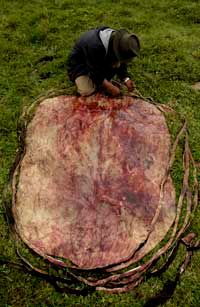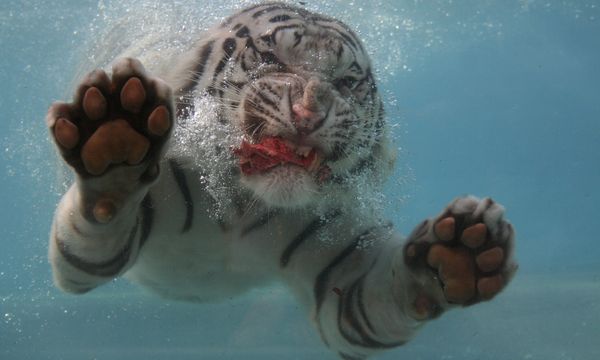Rushed weekday mornings leave little time to contemplate the backstory of the clothes we toss on. A majority of the time, we simply buy shirts, jackets or jeans from a store and call it a day, no questions asked. And although you may have sewed a button on a shirt or adjusted a skirt's hem, for most of us, wardrobes require little manual labor.
Advertisement
Obviously, early man's clothing was a different story. Millions of years ago during hunter-gatherer times, there was no linen, silk or cashmere. And you can forget the mall. Only the plants and animals available to our ancestors could protect their bodies from the environment. Before PETA and pleather, humans dressed for utility, not fashion, and the most durable and weather-resistant fabric around came from animal hides.
Archaeological evidence traces the history of leather back as far as 20,000 B.C. [source: Leather Research Institute]. The book of Genesis mentions how God made clothing for Adam and Eve from animal skin before booting them from the Garden of Eden. The style was also followed by ancient Egyptians who wore leather sandals. Today, the modern leather industry is continually looking for more efficient tanning procedures since 1 metric ton of rawhide translates to only 550 to 660 pounds (250 to 300 kilograms) of leather [source: Short]. Some hunters, taxidermists and specialty tanneries cure their leather the old-school way, with hand-held tools and natural chemicals.
Indeed, tanning a raw animal hide by hand in order to make leather is neither clean nor quick. Essentially, you must remove the hair and epidermis layer from the outside of the skin and the hypodermis located on the inside [source: Richter and Dettloff]. That leaves you with the dermis to tan, which means that wearing leather is just covering your skin in the skin of something else.
If you're snacking right now, put away the food. We're about to learn how that animal dermis transforms into leather, and it's going to take some brains to get there.


